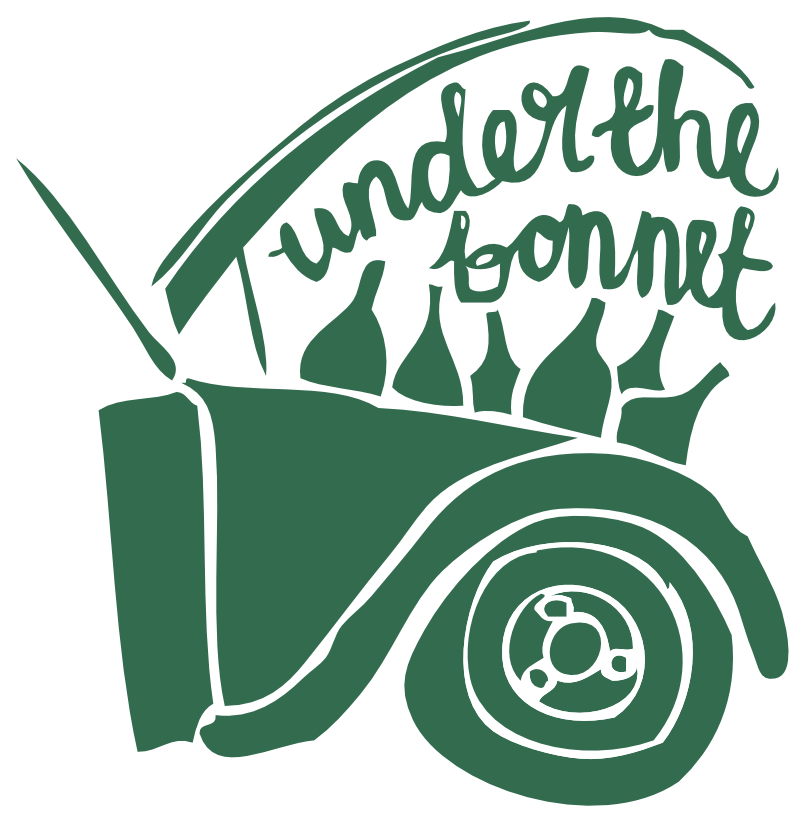We have two new releases from Project 108!
The Rouge 2019, a 100% Carignan from 100 year old vines on a heavy clay limestone soil in the hills of Peyriac de Mer; and Cabirou 2021, a skin-macerated blend of 30 year old Muscat and 100 year old Grenache Gris.
Speaking with Paul, it's clear that despite 20 years of winemaking and biodynamic agriculture, he's still thrilled by the surprises the game can throw at him. Endlessly curious, bumps in the road simply become problems to solve, lessons to learn.
"21 was an incredibly varied growing season, a bit of a funny one. We really struggled with rain, and it fell very inconsistently. A vigneron just 5km had plenty all year, but my vines really suffered with hydric stress. I could see the rain further up in the Hautes Corbieres, but nothing ever fell out of the sky onto ours!
Once you take the water away, the sap stops flowing, all the nutrients stop flowing. You feel that in the cellar. We also had the frost in April 21, which is new for us here. Things are shifting- 2018 was the first time I'd seen mildew also. Viticulture ends up being a really good indicator of climate change.
We've not had to deal with frost before, and whilst we only lost about 20%, the vines really went into shock afterward, which I'd not had to consider much in the past.
When a vine closes down like that, its stops taking up a lot of nitrogen, and the ferment can be a lot trickier when there's not enough accessible nitrogen. It was really interesting to observe.
We've had such a great start to 2022, a nice amount of rain, but I'm taking the lessons of 2021 on board, so I'm out here in the vines making sure I do everything to keep nutrient populations up, putting on a bit of algae, a little zinc. If we look after the nutrients now, they'll take care of everything in the cave."
Cabirou 2021
"I made Cabirou in much the same way as the 2020. Muscat and a little Grenache Gris from from dramatic steep parcels in the hills, on schist. A 70/30 mix of whole bunch and de-stemmed, macerated for 15 days. I felt I picked about a week too late in 20, so for 21 I picked a week earlier, it's a lean, mineral expression. For 22 I'll probably do two passes, one pick early for tightness and minerality, and another for that fleshy tropical fruit. I like to do that in my winemaking, take a couple of snapshots over the harvest for a more complete picture of the terroir."
Fermented and aged in stainless steel, aged on the lees for 6 months with regular battonage before bottling unfined and unfiltered in March 2022.
Rouge 2019
"Most of the Carignan this year comes from a 100 year old vineyard, and a little from a 15 year old vineyard beside the river, planted with all three Carignan colours.I was aiming for something very elegant. Carignan is an interesting creature, in that it can go from being quite ethereal and Pinot-esque, and after just a week in barrel can morph into something broad-shouldered and more Barossa in character!"
"We put the 2018 Rouge into barrel and I really loved the development, but I was quite taken aback with how much this one changed over 8 months. Especially when you're working with zero sulphur, that development can be much faster, everything seems accelerated, I've found."
"Which is all to say, I took my time releasing this one, waiting for it to reach the happy place. It was in barrel until September 2020, when we moved it to stainless steel for 8 months, and bottled with zero sulphur in May 2021."
"The fruit was mostly destemmed, with a little whole-bunch- less than in 2018, and it fermented outside in a large 2500 litre barrel. After 11 days of maceration we moved it to the 600l barrels where it finished fermentation."
After a few tricky years in Corbières, Paul sounds incredibly optimistic about 2022, with plenty of well-spaced rain, shoots are growing well and the vigour is noticeable:
"The vines look so happy so far this year. You can see the sap flowing, just rushing through the vine. This is natural wine really, you look after your vines and you can see that energy, you know they have access to as many nutrients and minerals as possible, and hopefully you know the ferment is going to be easy at the other end."
"That said, you start each year with 100% potential crop don't you. Then you might have a bit of a snail problem, and you lose 3%. Then the wild boar, and you lose 10%. Maybe a bit of frost, you lose 15%. It becomes a game of how much can you keep! But, I feel good this year, so far- it looks to be good for us here."
SKINS
NEW - 2021 - Cabirou - Muscat, Grenache Gris
RED
NEW 2019 - Rouge - Project 108 - Peyriac-de-Mer - Carignan




